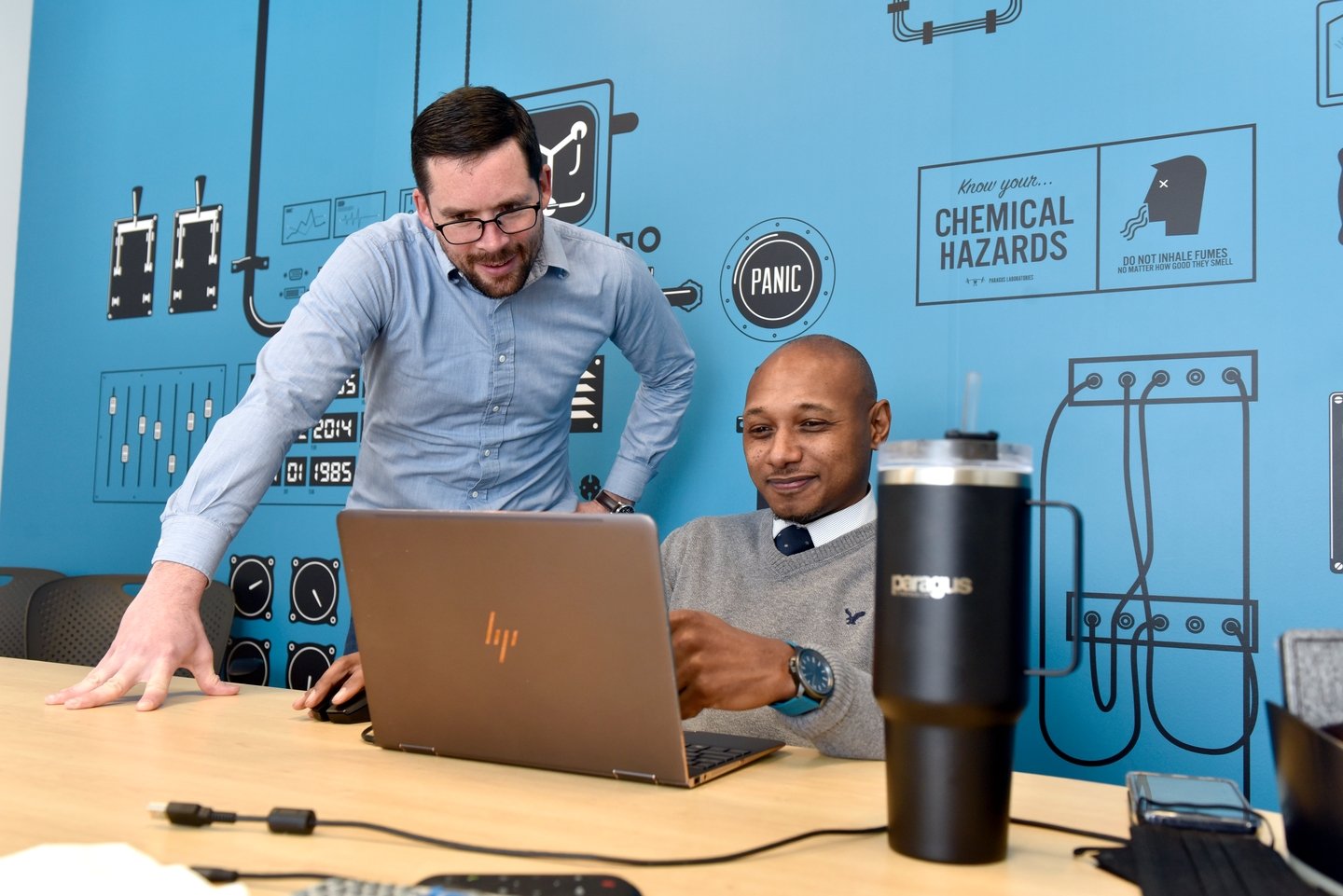business AI & automation
You can’t talk about technology today without mentioning AI and Automation. At Paragus, we understand that many people are still navigating these tools and how they can benefit their business. Whether you’re just starting your AI and Automation journey or looking to take things to the next level, Paragus has got you covered. Unlock the full potential of your business with Microsoft Power Tools. Streamline operations, enhance productivity, and drive innovation with powerful automation solutions tailored to your needs. Start your journey towards a smarter, more efficient future today.
Business Automation | AI & Automation | Benefits | What Can Be Automated? | How We Do It | Automation Assessment | Case Studies
Automation & AI—It’s Quick, It’s Easy, And Your Competition Is Already Using It
As Automation & AI becomes increasingly accessible, nearly 70% of businesses are using it to cut costs, streamline operations, and gain a competitive edge.
But does it really save that much time and money? What kind of changes will you have to make to your current systems? Is it easy to use? When should you not use it?
Paragus is here to demystify the process and deliver results, with services including:
Automating business processes using Power Automate
Building custom apps leveraging Power Apps
Dashboards for data visualization with Power BI
-

Eliminate Tedious
& Repetitive Tasks -

Free Up Time For
Other Ventures -

Consistent Workflow
& Project Completion -

Tracking
& Analytics
BUSINESS PROCESS AUTOMATIONS
SAVE VALUABLE TIME AND MONEY.
Appointment Booking
Approval Processes
Asset Management
Collecting Survey Results
Gathering Teams Data
Email Auto-Responses
Employee Scheduling
Event Registration
Issue Tracking & Resolution
Keeping People Informed
Managing SharePoint Data
Notifications & Alerting
New Employee Onboarding
Organizing Email Attachments
Sales Leads & Assignment
Social Media Activity
Time-Off Requests
To Do List Management
Uploading / Organizing Files
Time For A 15 Minute Chat?
LET’S MAKE THIS AS SIMPLE AS POSSIBLE.
We will get into more detail as the process rolls out and we get into the specific needs of your business, but this will give you a general roadmap of the Paragus automation journey.
Goals & Scope
First, we’ll have a call with your team to get an idea of your overall goals and vision with the project and what you’d like to accomplish.
Next, we’ll speak in more detail with the person directly involved in the process being automated (someone in the accounting department if we’re automating payroll, for example).
THE PITCH
We will present you with a document that clearly lays out:
Workflow evaluation
Suggested goal for Phase One
Timeline
Estimated budget—including how much the new automation will save!
We will also lay out potential next steps and what future phases might look like.
APPROVAL
& FIRST
PAYMENT
We receive 50% of the estimated budget on project approval and 50% at process completion.
While we can’t give you an estimate until we scope your project, clients typically see an 8-10x ROI in the first six months alone.
Each project is different, so we will go into more detail as the process continues, but generally this is how it goes:
Create and get approval on proposed workflow.
Frequent check-ins to ensure we are on track.
Demo and test the automations.
Train your team on using the automations.
Once approved, we go live!
Document and back up the automation.
Assess the results and discuss future enhancements.
The Paragus Automation Assessment
30-minute intro call to discuss how automation can streamline workflow
4 in-person or video-call shadowing sessions to identify potential automations to benefit your business (max 90 mins per session)
Recap meeting with detailed list of potential automations with estimated time and money saved
For an investment of $749, you can save big over the long term by permanently eliminating tedious, time-consuming tasks.
With so many changes to the labor market, it’s more important than ever to be able do more with less.
Sign up for the Paragus Automation Package and start saving time and money today.
Explore our latest case studies to see how businesses like yours have transformed their operations through automation and AI. From reducing manual tasks to enhancing productivity, our success stories highlight the tangible benefits of automation and AI. Scroll through the gallery below to see a more in depth view of our automations or click the button below to download a pdf highlighting the impact of our automation and AI process.



























